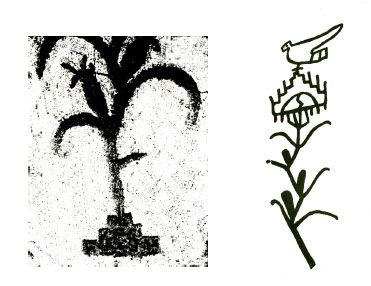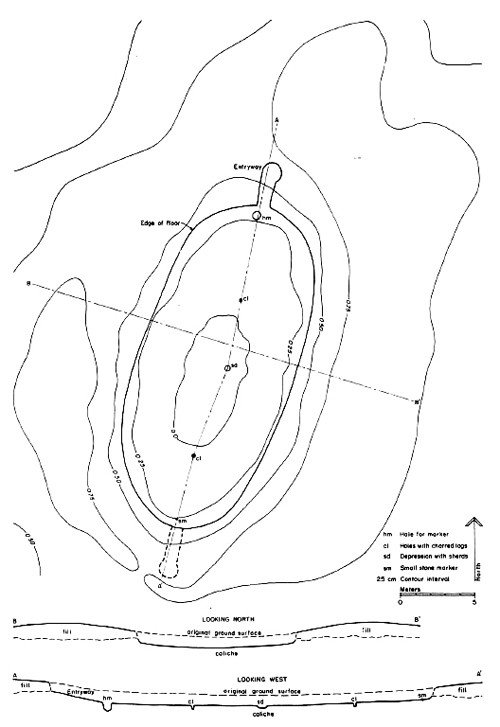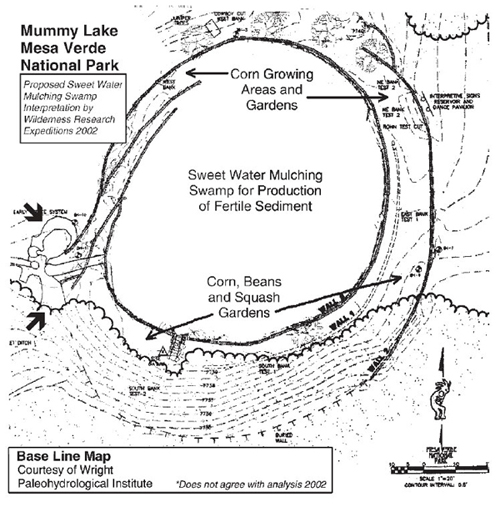| • CONTACT |

Two Anasazi symbols for fertilizer (above)

Chacoan architecture for producing fertilizer

Hohokam architecture for producing fertilizer

Mesa Verde architecture for producing fertilizer (above)
| The Continuing mystery of Chacoan and Mayan agricultural production trategies. Is the solution to this question compatible between these two cultures in very different regions of North America? By Richard D. Fisher - January 2007 |
|
INTRODUCTION: My research on the Chacoan and Hohokam methods of producing
fertilizer provides the key to unraveling
one of the greatest mysteries concerning the Mayan civilization of
the Yucatan and Guatemala. The mystery is, how did the Mayan
produce adequate food to feed the millions of people who built the
famous Mayan monumental architecture in a rain forest
environment with an inadequate water supply and extremely poor limestone
soils? This is essentially the same question that
has been asked about the Chacoans except that they lived in an extremely
arid desert region and with very poor sandy saline/
alkaline soils. According to NASA archaeologist Tom Sever, the Mayan
civilization in Mesoamerica was one of the densest populations
in human history. Around 800 A.D., after two millennia of
steady growth, the Mayan population reached an all-time
high. Population density ranged from 500 to 700 people per
square mile in the rural areas, and from 1,800 to 2,600 people
per square mile near the center of the Mayan Empire (in what
is now northern Guatemala). CONCLUSION: While, as Redford noted, Chaco Canyon
itself is in the center of one of the driest (and most alkaline)
regions in North America and as such unsuitable for agriculture,
I would like to point out that the Mayan civilization,
which also had monumental architecture and is known for its
advanced astronomical knowledge, is situated in a rain forest
featuring karst (limestone) geology and is equally unsuitable
for agriculture in a completely different way. Recent NASA
research indicates one of the highest population densities in
human history with millions of Mayans inhabiting a tropical
rain forest environment. As with Chaco, archaeologists make
absolutely no provision for the required fertilizer. My proposal
resolves how these two famous ancient cultures (as well
as all North American civilizations of that time period) were able
to develop complex civilizations in equally inhospitable
environments for intensive food production.
Below are four illustrations and graphics that are from my
paper Ancient Knowledge of the Chaco Canyon Anasazi and
illustrate my research discoveries concerning how the Anasazi
and Hohokam made fertilizer. I believe this knowledge can
now be applied to help resolve how the Mayans made
fertilizer. I believe that the Mayans had a basic architecture
which preceded that of the Chacoans and Hohokam and that
analysis of currently existing data will produce the resolution
to the fundamental question of how the Mayans supported a
population of millions as suggested by professor Tom Sever
in the NASA proposal. |